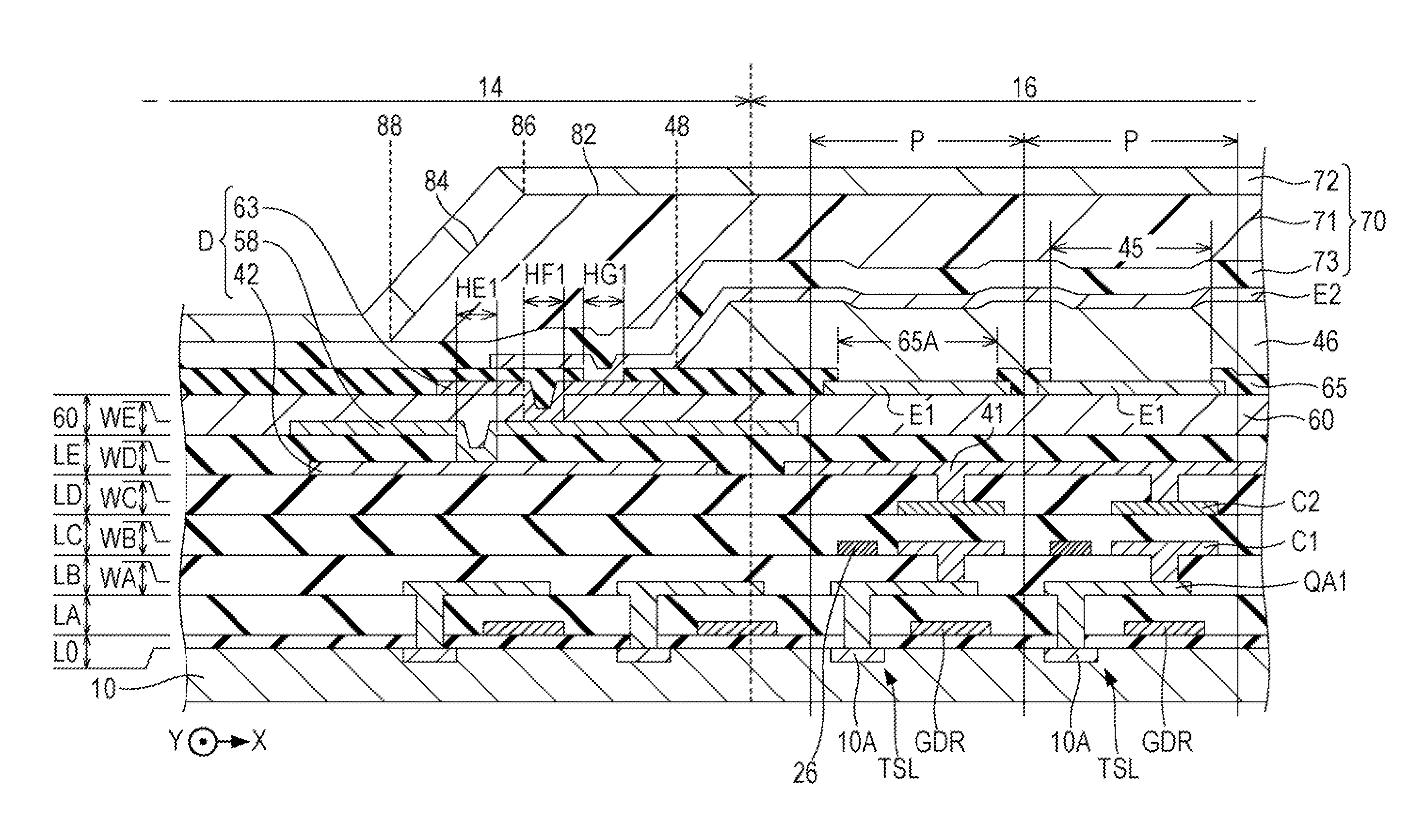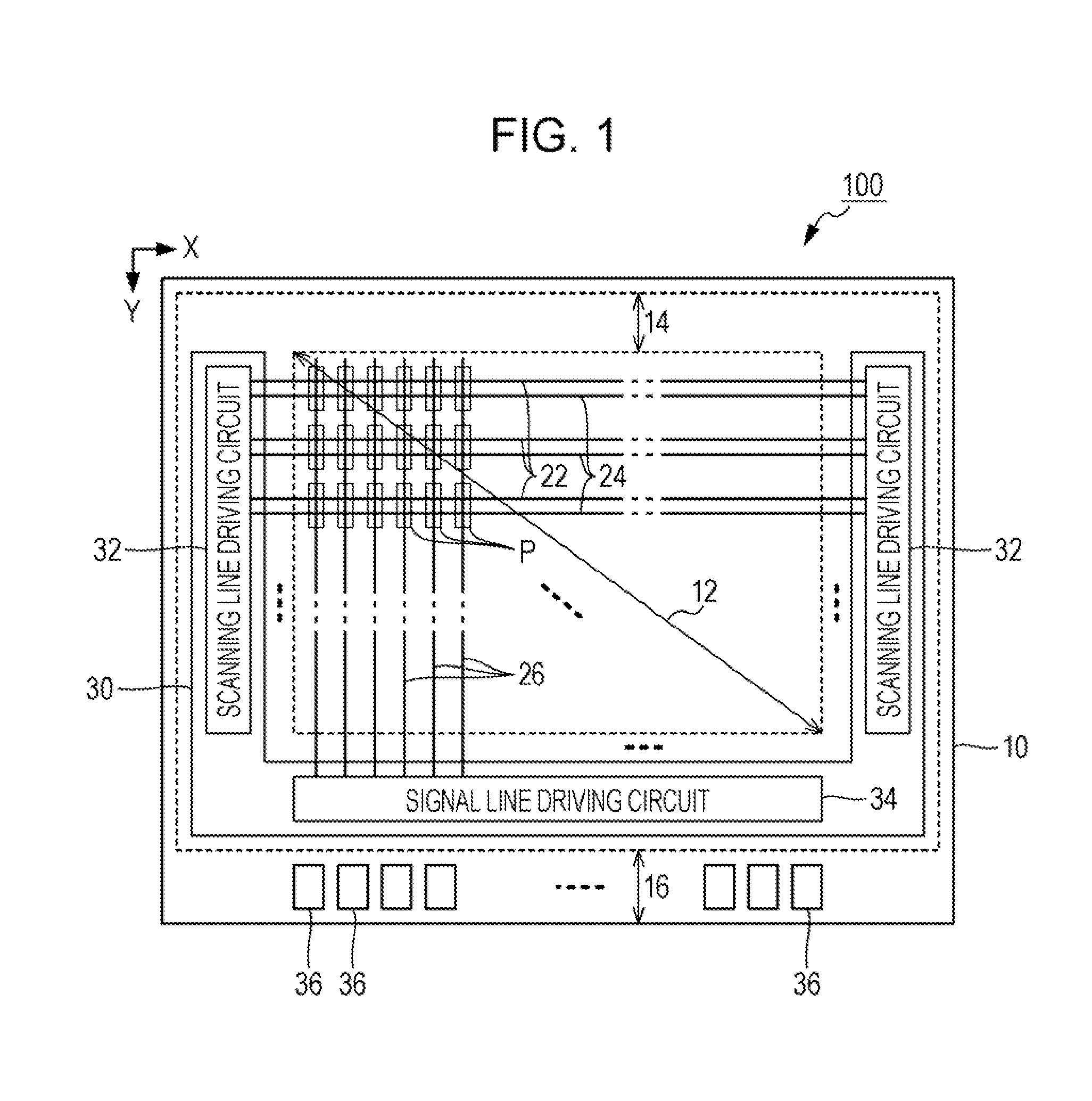Light-emitting device and electronic apparatus
- Summary
- Abstract
- Description
- Claims
- Application Information
AI Technical Summary
Benefits of technology
Problems solved by technology
Method used
Image
Examples
first embodiment
[0044]FIG. 1 is a plan view of a light-emitting device 100 according to a first embodiment. The light-emitting device 100 of the first embodiment is an organic EL device in which light-emitting elements that use an organic EL material are formed on the surface of a substrate 10. The substrate 10 is a plate-like member (semiconductor substrate) formed of a semiconductor material such as silicon and is used as a base body (base) on which a plurality of light-emitting elements are formed.
[0045]As exemplified in FIG. 1, a display region 12, a peripheral region 14, and a mounting region 16 are demarcated on the surface of the substrate 10. The display region 12 is a rectangular region in which a plurality of pixels P are arranged. In the display region 12, a plurality of scanning lines 22 that extend in an X direction, a plurality of control lines 24 that extend in the X direction to respectively correspond to the scanning lines 22, and a plurality of signal lines 26 that extend in a Y d...
second embodiment
[0103]A second embodiment will now be described. In the embodiments exemplified as follows, like elements having the same actions or functions as those of the first embodiment are denoted by like reference numerals referred to in the description of the first embodiment, and detailed description thereof will be appropriately omitted.
[0104]FIG. 19 is an explanatory view of the filter layer 90 formed on the surface of the sealing body 70 of the second embodiment. As exemplified in FIG. 19, in the insulating layer 92 of the second embodiment, the opening 92B described in the first embodiment is not formed. The protection portion 96 of the second embodiment is different from that of the first embodiment in the positional relationship between the peripheral edges of the layers (the first, second, and third layers 96R, 96G, and 96B). In the first embodiment, the peripheral edges of the layers of the protection portion 96 overlap each other in the plan view (the side surfaces of the layers ...
modification example
[0107]The embodiments discussed above may be modified in various forms. Specific modifications are described below. Two or more forms that are arbitrarily selected from the following examples may be appropriately combined.
[0108](1) From the viewpoint of reducing the height difference in the surface of the filter layer 90, as illustrated in FIG. 20, the protection portion 96 having the same film thickness as that of the insulating layer 92 may be formed on the inside of the opening 92B formed in the insulating layer 92. According to the above configuration, as illustrated in FIG. 20, since the surface of the insulating layer 92 and the surface of the protection portion 96 are positioned on substantially the same plane, an effect of a reduction in the height difference in the surface of the filter layer 90 becomes more significant.
[0109]However, in the case where the spin coating method or the like is employed to form the adhesive layer 21, there is a possibility that the adhesive tha...
PUM
 Login to View More
Login to View More Abstract
Description
Claims
Application Information
 Login to View More
Login to View More - R&D
- Intellectual Property
- Life Sciences
- Materials
- Tech Scout
- Unparalleled Data Quality
- Higher Quality Content
- 60% Fewer Hallucinations
Browse by: Latest US Patents, China's latest patents, Technical Efficacy Thesaurus, Application Domain, Technology Topic, Popular Technical Reports.
© 2025 PatSnap. All rights reserved.Legal|Privacy policy|Modern Slavery Act Transparency Statement|Sitemap|About US| Contact US: help@patsnap.com



